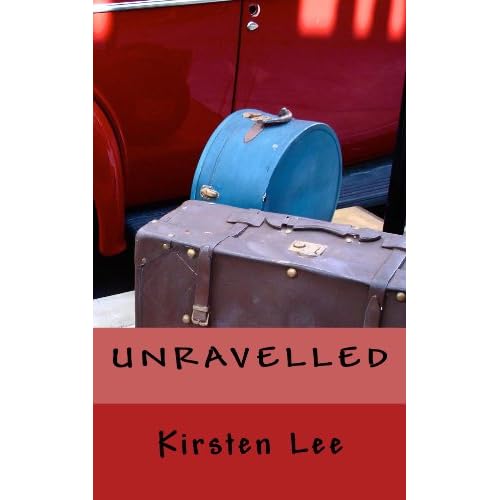First Paragraph:
"I winced as I descended the iron stairs letting down from the train carriage to the empty platform below. My exasperation wasn't for the slightly grubby glove the conductor offered to help me alight but for an especially loud peal of laughter from behind."
Death on Dartmoor by Dara England is the first instalment of the American Heiress Mystery series. Set in what I assume is the Victorian Era (cerca 19th Century), the characters' mannerisms and lives are very similar to how people from this era are portrayed in historical dramas and books by authors such as Jane Austen. They are very proper, wear corsets and women are best without personalities. Seen but not heard.
As with many of Jane Austen's heroines, our female protagonist has more wit and a sharper tongue than her mother thinks is wise. However is she to marry if she doesn't act docile.
That protagonist is Millicent Wright, a young, American women in her late 20's travelling with her mother around England. Heading out from their hometown of Chicago, they travel first to London and then onto the small village of Buckfastleigh on the invitation of Sir Oliver Longbourne. They first met in Chicago and he requested their company if ever they found themselves in England.
For Millicent, the trip is not one she's entirely comfortable with. Her mother has plans to find her an available bachelor (preferably one with a title) and has set her sites on the baronet. And so they find themselves on a train headed for Buckfastleigh, to be picked up by a carriage and taken to their final destination of Buckfast Hall.
Whilst on the train, the two of them meet the charismatic Colonel Quinlan- who it turns out is headed for the same place. He has known the Longbourne family for years and is the brother-in-law of Sir Oliver. His sister married the baronet, but died in unfortunate circumstances two years prior, leaving her now 10-year-old son Phillip behind.
Soon after Millicent arrives, she begins hearing rumours about her prospective husband and even more chilling ones of the curse of the Longborne brides. Can they be true? And what exactly is the curse?
On the night of their arrival, the gothic novels that Millicent loves seem to become reality. A dinner of ten (six women and four men) ends in the tragic death of Sir Oliver. A Justice of the Peace and doctor are called for by one of the guests, Doctor Shephard, for a second opinion and verdict. When they surprise everyone with the news that Sir Oliver's death was no tragic accident, but rather a poisoning, theories start flying and accusations are abound. Is it the curse? A scorned woman? Or perhaps a man with grudge?
As they go to their separate rooms for the night, a passing comment by the Lady Longbourne (grandmother of Sir Oliver) alerts Millicent. Claiming that she knows who poisoned her grandson and why, Lady Longbourne refuses to reveal more when Millicent questions her. Lady Longbourne's time may be short, because as we all know, never reveal you know anything when a murderer is still on the lose. At least if you want to survive the night.
The Next day, Detective Abel Lockwood is called to the scene to investigate. The suspects must all be confined to the house and none of them are happy about it. Millicent is determined to be of assistance. This situation is too much like her novels for her to pass up. How can a book compare to solving a real murder? Detective Lockwood isn't too happy about having an amateur on the scene and so Millicent sets out to prove him wrong. She may also have to investigate the relationship the two seem to have. Could love be blooming between them?
Is snooping about in other's affairs wise or is she drawing attention to herself? If she's not careful, she may find herself locked in with the other skeletons in the closet.
When another body pops up and there can be no doubt that a murderer is on the loose in Buckfast Hall. But what is their motive? And will they kill again?
Done in the same style as the good, old-fashioned murder mysteries, there are suspects abound. Could it be the young Miss Amelia- who is rumoured to have had a romantic connection with the late Sir Oliver? Or perhaps her father, Doctor Shephard- trying to protect his daughter? Or the pleasant Colonel- who was trained to kill? Or maybe even Caroline (Oliver's sister)- trying to salvage her family and its fortune? Or one of the staff? Perhaps a young man accused of thieving earlier that day? The list keeps growing and both the detective and Millicent have their work cut out for them. It's a race to find the killer, before someone else ends up dead.
The plot is your traditional who-dunnit. The characters are typical of the genre. There's not much I have to say about either of these things. There's always a formula with this genre and always certain personality traits present in characters. Does that mean that the formula is tired and overused? No, well maybe a little, but there's a reason it's still going strong. It works. Having said that, the formula is pretty basic, so there's a large range of options available when creating a murder mystery story, which helps keep interest. But the secret to success? Why murder mysteries are so prevalent? Why there's always one on TV or in a book store? Simple, people can't resist a mystery. It is human nature to want to know the answer. We don't like to be kept guessing and we want everything wrapped up in a neat, little bow by the end. No loose threads for us.
Some of the revelations were a little predictable and I did see the ending coming. There were a few surprises here and there, but on the whole nothing too shocking. However, the predictability did little to lessen my enjoyment of this book. This is one of those shamelessly enjoyable books. It may not be the most well written book, the characters may not be unique and the plot may have been done a million times, but I found myself wanting to know more about all of these things. When the story ended, I wanted to keep reading. A short book leads to a quick resolution and it was over before I knew it. It's safe to say I'll be checking out the next instalment when it's released.
Disclaimer: This book was sent to me by the author through a giveaway. This is not a sponsored review. All opinions are 100% my own.






